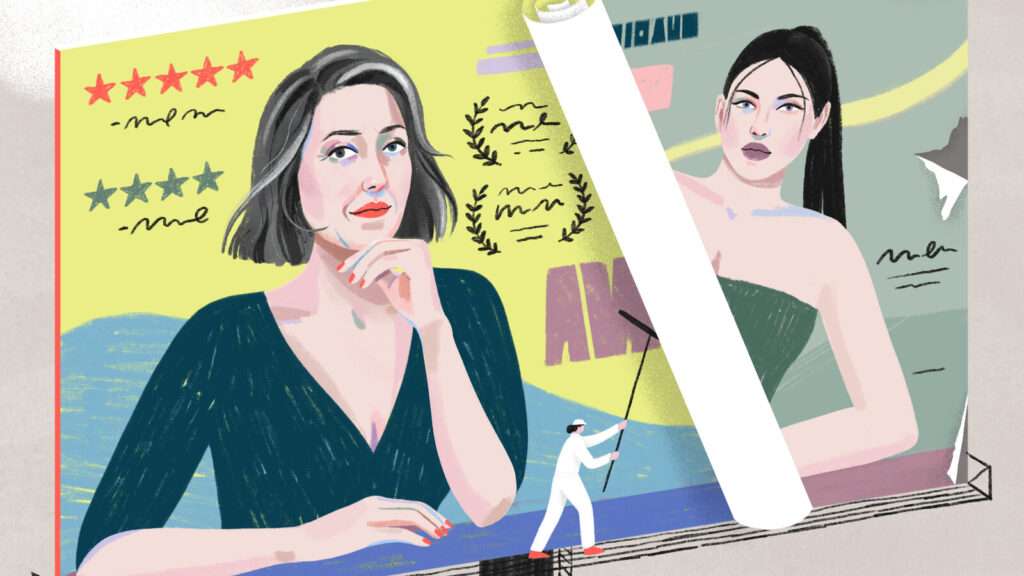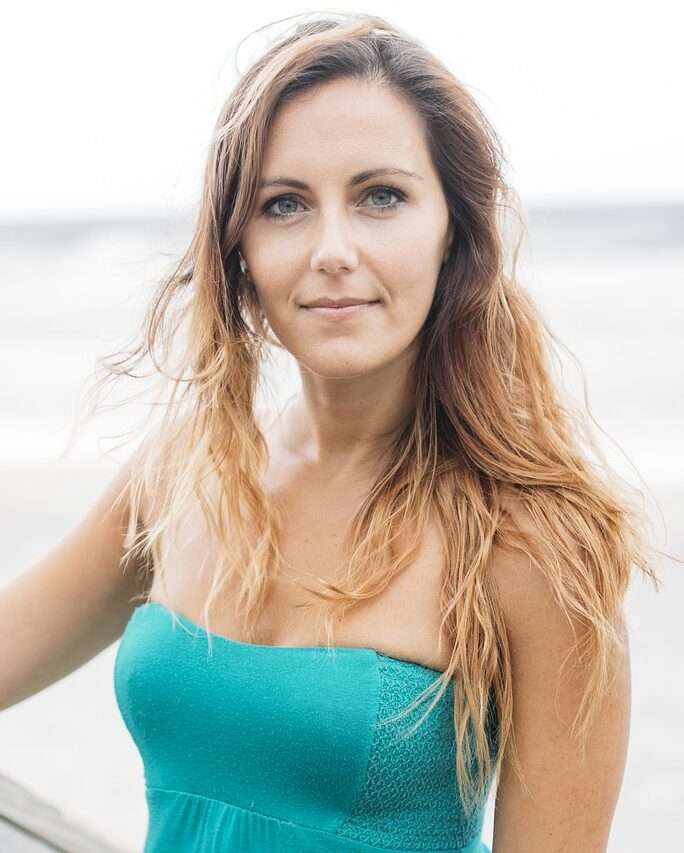
TV and Movies Are Finally Celebrating Older Women
When Kate Winslet won an Emmy this month for her performance in “Mare of Easttown,” she called her character a “middle-aged, imperfect, flawed mother” who “made us all feel validated.”
Ms. Winslet, 45, had something in common with the night’s other winning women. There was Hannah Waddingham, 47, from “Ted Lasso,” and Julianne Nicholson, 50, from “Mare of Easttown.” Gillian Anderson, 53, took the Emmy for supporting actress in “The Crown.” And Jean Smart, 70, won outstanding lead actress in a comedy series for “Hacks.” Women over 45 were suddenly the biggest winners of the small screen.
Compare this with the 1950 noir film “Sunset Boulevard.” Its protagonist, Norma Desmond, is a washed-up silent film star considered far too old to reinvent herself for the talkies.
Her age? Fifty.
Back then, and until quite recently, anything past 40 was considered ancient in Hollywood years. “It’s always been this youth-obsessed industry,” said Yalda T. Uhls, founder and executive director of U.C.L.A.’s Center for Scholars & Storytellers.
Men could find roles whatever their age, but women might disappear from the screen during perimenopause, or emerge a few years later in supporting roles, usually as dowdy, eccentric or senile grandmothers, evil stepmothers or spinster aunts.
“If you were 45, or certainly 50 or over, these were the parts you could get: a dying patient or a meddling, horrible mother-in-law,” said Susan J. Douglas, a professor of communication and media at the University of Michigan and author of “In Our Prime: How Older Women Are Reinventing the Road Ahead.”
Even if some of these so-called nunsploitation films of the 1960s, like “Whatever Happened to Baby Jane” or “Hush … Hush, Sweet Charlotte,” were good films, they portrayed older women as mentally incapacitated or murderous.
Ageism is a pervasive problem, both in Hollywood and in the United States at large. The National Poll on Healthy Aging found that 82 per cent of older adults reported experiencing ageism on a regular basis, including being exposed to ageist messages and jokes suggesting older adults are unattractive or undesirable. Women experienced more ageism than men, the poll found. Yet older adults’ attitudes toward ageing were pretty positive: 88 per cent reported feeling more comfortable with themselves as they got older.
A report from the Geena Davis Institute on Gender and Media concluded that even now, there is a dearth of roles for older actresses, and the roles that do exist portray them as senile, homebound, feeble or frumpy. In the highest-grossing films from Germany, France, Britain and the United States in 2019, there were no female leads over 50, the report said, and just one-quarter of characters over 50 were women. Only a quarter of films passed what the report called “The Ageless Test,” meaning they had one female character over 50 who was signed to the plot and was presented in “humanizing ways and not reduced to stereotypes.”
But it’s possible that this year’s Emmy winners are a sign of changing times, changing demographics, and changing — or long-ignored — tastes. So how did we go from “frail, frumpy and forgotten,” as the institute’s report is called, to Julia Louis-Dreyfus playing a hilarious, diabolical and still-sexy politician in “Veep,” or Sandra Oh starring as an embattled professor on “The Chair,” or Angela Bassett, Felicity Huffman and Patricia Arquette starring as unappreciated mothers who take back their lives in “Otherhood”?

“We are in the midst of a demographic revolution,” Dr Douglas said. As of 2019, there were just under 72 million baby boomers and over 65 million Gen Xers. “There are more women over 50 than ever before in our society. And millions of them are not really ready or eager to be told to go away and obsess about their grandchildren without participating in and doing other things.”
Amy Baer, president of Landline Pictures, which debuted earlier this year to focus on the over-50 crowd, said ageing had become a much more “dynamic experience” — less about retiring than about starting something new. “They may have raised children and they’re finally at a place where they can focus on themselves professionally and personally,” Ms Baer said. “They may be changing jobs. They may be finally falling in love after being professionally focused.”
She says this shift — living longer, living better — is just one reason that portrayals of older women in Hollywood are finally improving, both in number and scope. Women over 45 are being cast as leads in complex roles, sometimes the best roles of their careers.
It began with a couple of outlier films in the early 2000s, Ms Baer said. Two romantic comedies from Nancy Meyers — “Something’s Gotta Give,” starring Diane Keaton and Jack Nicholson, and “It’s Complicated,” with Meryl Streep, Steve Martin and Alec Baldwin — portrayed women in their 60s as romantically desirable leads. The films had enough commercial success to alert industry gatekeepers to an untapped audience. They started to realize, Dr. Uhls said, “there’s a market we’re not exploiting here.”
That audience had both time and money, and was conditioned to going out to the movies, but could adapt to streaming. The media for and about this market appealed to other demographics, too. One of Netflix’s first streaming megahits, “House of Cards,” starred Robin Wright, who was 46 when the series debuted, as the frosty mastermind of the country’s most powerful couple. Not long after, “Grace and Frankie,” a comedy about two vibrator-designing octogenarians, Jane Fonda and Lily Tomlin, became a hit among many different demographics; it’s now Netflix’s longest-running original series.
This content is “consistently successful and has crossover to a younger audience,” Ms Baer said. “There’s an insatiable need for original content right now in the space that we’re in.”
When executives at the independent studio MRC Films approached her about Landline, Ms Baer said she did a “back of the napkin” analysis on 25 years’ worth of films for and about older people and found that almost all had good returns on investment. “I’m not saying they succeed on the level of a Marvel movie, but they absolutely are financially successful,” she said.
The key, Ms Baer said, is telling the right kinds of stories, especially those that don’t pander to older people. “We’re creating content that is entertaining, relatable, and deals with life experiences that anyone over 50 is going through,” she said, but that people under 50 can also enjoy.
Landline’s first project, “Jerry and Marge Go Large,” will star Annette Bening and Bryan Cranston in the true story of a retired Michigan couple who found a loophole that allowed them to win big in Massachusetts lottery and use the winnings to help their town.
Projects like these allow female actors who once would have had dwindling work opportunities to explore new parts of their ranges. Consider Frances McDormand’s Oscar-winning performance in “Nomadland,” or Ms Winslet’s acclaimed role in “Mare of Easttown,” both roles that required looking like non-Hollywood types.
“Great actresses are kind of enjoying being nonglamorous and not trying to look 20,” Dr Douglas said. “They’re looking their age and they’re proud of that and they work with it.”
Suddenly women are being celebrated for embracing their age. Or as Angela Bassett’s character, Carol Walker, says in “Otherhood”: “You know what’s anti-aging? Death. Let’s be happy we’re ageing.”
“Every actress I’ve had a conversation with has been incredibly embracing of our mission and really excited,” Ms Baer said. “These are all women who are still in the prime of their career and are not ready or old enough to simply play the grandmother.”
This is not to say that ageism will evaporate or that face-lifts will all of a sudden become obsolete (or that there’s anything wrong with playing the grandmother!). “We’ve got a real turnstile moment here,” Dr Douglas said. “On the one hand, there are older celebrities and public figures who are out there embracing their age, while at the same time we still have ageist stereotypes.”
The opportunities for older women are not without limitations, either. “Most of the roles are straight, white women,” she said, as the Emmys painfully revealed.
We urgently need more representations of older women of colour, older queer women, older working-class women, and also more stories of strong female friendship, Dr Douglas said.
Hopefully by next year’s Emmys, we’ll have more.

Mrs Vicky m Bournel has made this magazine proud. She is not only an Author from America for Lakkars Magazine she is the Chief Editor of Lakkars Magazine for the articles.


